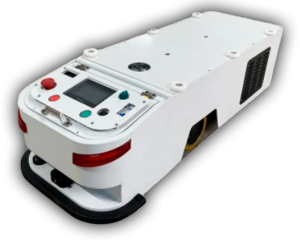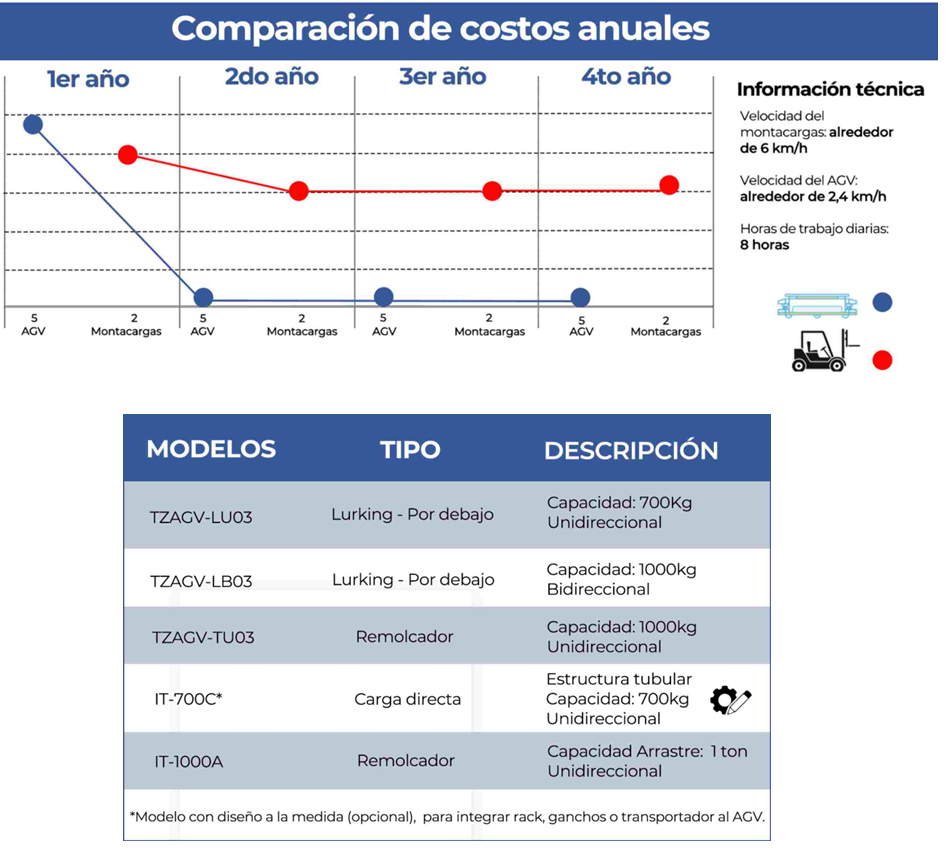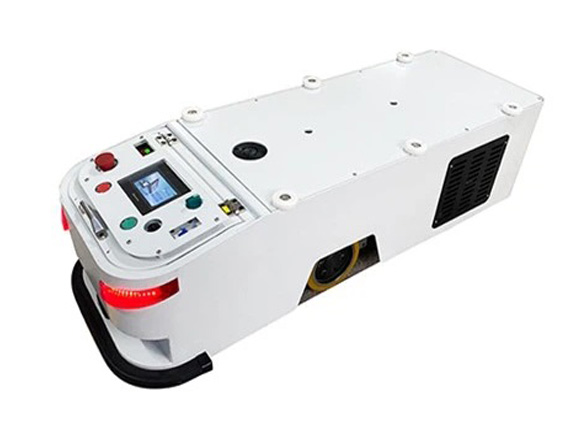
An AGV (Automated Guided Vehicle) is a type of mobile robot used in industrial environments for the autonomous transport of materials.
These vehicles move driverless following predefined routes or using advanced navigation technologies.

Efficiency: Improve operational efficiency by automating material transport.
Safety: Reduce the risk of workplace accidents by minimizing human intervention in repetitive and hazardous tasks.
Flexibility: Can adapt to different warehouse configurations and types of loads.
AGVs can use different navigation methods, such as:
Magnetic tape guidance: They follow a magnetic tape adhered to the floor.
Laser guidance: They use reflectors and laser sensors to determine their position and route.
They are equipped with sensors that allow them to detect obstacles and avoid collisions, ensuring safe operation in environments shared with people.
AGVs can be connected to a central control system that manages their routes and tasks.
They can communicate with other AGVs and warehouse management systems to coordinate their movements and optimize workflow.


The Return on Investment (ROI) of an AGV can vary depending on several factors, such as the type of industry, the size of the operation, and the complexity of the system implemented.
However, in general, AGVs offer a significant ROI due to several reasons:
Resource Optimization: By automating material transport, AGVs allow for better use of personnel, freeing them up for more complex and value-added tasks.
Continuous Operations: AGVs can operate 24/7 without the need for breaks, which increases productivity and reduces downtime.
Accident Reduction: By minimizing human intervention in repetitive and potentially hazardous tasks, workplace accidents are reduced, which in turn lowers compensation claims and insurance fees.
Cost Savings: Although the initial investment may be high, long-term operating costs are lower due to increased efficiency and fewer errors.
Payback Period: On average, a return on investment is reported within approximately three years.
The demand for AGVs is growing at an annual rate of 15.8%, indicating a positive trend in the adoption of this technology.
Implementing AGVs can be a strategic investment that not only improves operational efficiency but also contributes to the safety and sustainability of operations.

With magnetic tape navigation, these unidireccional AGVs are designed to carry material or tow material carts with a load capacity of up to 1 ton.

With magnetic tape navigation, these AGVs have a more compact design and feature an electric cylinder to position themselves under racks or towing tail, with a load capacity of up to 1 ton.
.
Estamos para ayudarte.
